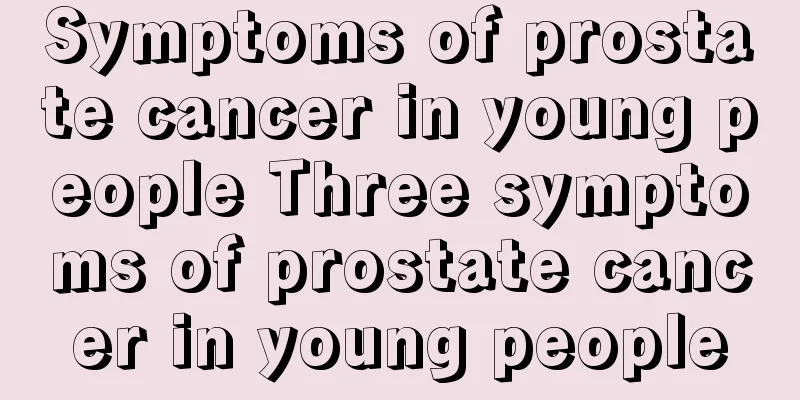What are the symptoms of acute urticaria?

|
There are many causes of urticaria, and large amounts of red spots will appear on the skin of some parts of the body. Urticaria is divided into two types: acute and chronic. Acute urticaria develops very quickly and the itching is unbearable. But relatively speaking, recurrence of urticaria can be avoided as long as allergens are isolated, medication is controlled, dietary restrictions and care are provided. Let’s learn about the symptoms that precede acute urticaria. 1. Premonitory symptoms of acute urticaria Wheals (urticaria) appear rapidly, and a few minutes before the wheals appear, there is often local itching or tingling. Some patients may experience systemic symptoms such as loss of appetite, general malaise, headache or fever within hours or a day or two after the appearance of the urticaria. The wheals are flat, red or yellowish or pale edematous macules with red edges. Sometimes, the wheals are ring-shaped and are called annular urticaria. Several adjacent annular lesions may connect or merge to form a map-like shape, which is called graphic urticaria. Sometimes, there are bruises in the center of the lesion, which is called hemorrhagic urticaria. The kidneys and gastrointestinal tract may bleed at the same time. When there are blisters in the wheals, it is called vesicular urticaria. When there are bullae, it is called bullous urticaria. Sometimes, blisters or bullae develop on skin that appears normal but often has a red blush; these wheals are more likely to occur in children. 2. Onset time of acute urticaria The wheals often disappear naturally within one or two hours or several hours, or at most within 1 to 2 days, but new lesions often appear elsewhere. Generally, no new lesions will occur within 24 hours where the wheals have disappeared. After the wheals disappear, the skin returns to normal, sometimes with temporary pigmented spots called pigmented urticaria. The size and number of wheals vary and may appear on any part of the skin or mucous membranes. Wheals cause severe itching, tingling or burning sensation, but the degree varies from person to person. Severe patients have systemic symptoms such as headache and fever. Especially patients with acute urticaria may have a fever of about 40°C, blood pressure may drop, and even fainting and shock may occur, which must be treated promptly. Most patients only have itchy wheals without other symptoms. The course of urticaria is uncertain. Some patients may have several rashes in a day, and the attacks stop after a few days or one or two weeks to several weeks. This is called acute urticaria. 3. Symptoms of acute urticaria The symptoms of acute urticaria are rapid onset and severe itching. Then bright red wheals of varying sizes and shapes appear. Wheals may be round, oval, isolated, scattered, or fused into patches. When the wheal is large, it may appear pale, with obvious pores on the surface, resembling orange peel. Wheals appear and disappear, and seriously ill patients may experience symptoms similar to anaphylactic shock, such as palpitations, irritability, nausea, vomiting, and even low blood pressure. Some patients may experience abdominal pain, diarrhea, and even suffocation. If patients want to treat acute urticaria well, the first priority is of course to find the allergens and further avoid them. As the saying goes, the person who tied the bell must be the one to untie it. Fortunately, acute urticaria comes and goes quickly. Usually it will heal within a few days as long as you don't encounter the allergen again. In addition to avoiding the allergen, oral antihistamines are the most important treatment, which can block some steps in your allergic reaction and prevent new rashes from appearing. |
<<: Can I eat bayberry if I have urticaria
>>: What are the medicinal values of sea cucumbers?
Recommend
Wearing 6 types of shoes in summer is most likely to hurt your feet
1. Flip-flops: your feet are getting uglier The m...
What should you pay attention to during supraventricular tachycardia
What should we pay attention to when experiencing...
Calcium zinc composite stabilizer
Calcium zinc stabilizer is mainly divided into fi...
Can patients with nasopharyngeal cancer eat fish? What are the treatment methods?
Can patients with nasopharyngeal cancer eat fish?...
What are the clinical symptoms of early lung cancer? 4 early symptoms of lung cancer Early detection and early treatment
Lung cancer is a disease that is more common in m...
How to care after osteosarcoma surgery
Osteosarcoma is a common malignant tumor disease ...
What early symptoms of bladder cancer can be found during routine examinations
Generally, the cure rate of bladder cancer is ver...
Things to note during tattoo peeling
It is best to get enough sleep and pay attention ...
How long can you live after a kidney transplant
Many patients have used drugs that stimulate the ...
How to diagnose liver cancer? Four diagnostic methods can confirm liver cancer
Liver cancer is a very common disease in our live...
Will nasopharyngeal carcinoma relapse after targeted therapy?
Will nasopharyngeal carcinoma relapse after targe...
What are the dangers of using a belly belt
Female friends often do things related to weight ...
How to treat insomnia and anxiety? 5 small methods with good effects
Nowadays, everyone is facing more and more pressu...
What are the characteristics of biological treatment for advanced liver cancer? Biological treatment for advanced liver cancer has four major advantages
Biological treatment for advanced liver cancer ha...









